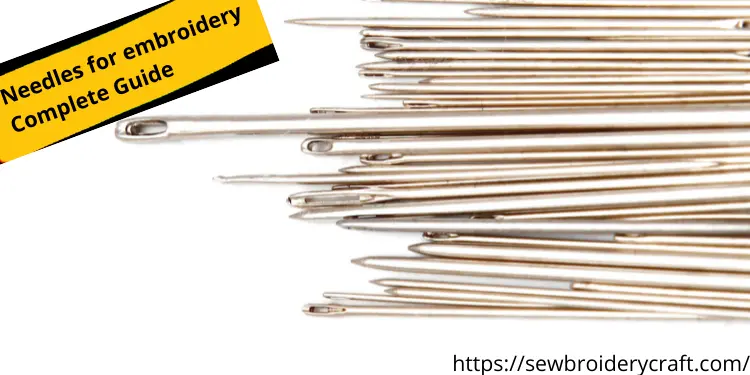
Embroidery is designed perfectly only when the embroidery needles used in it is perfect for that type of fabric and thread used in that process. So, choosing the right needle for your embroidery is crucial whether you are performing hand or machine embroidery. There are so many needles on the market now that make it easy for you to select the perfect one. If you want sewing to be a pleasure rather than a chore, you need to use the correct needle for this job by doing sharp needles vs dull needles exercise . Different types of cloth and thread thicknesses may require different types of embroidery needles and needle sizes. One thing to remember about embroidery needle guide is that their number indicates their size, with the higher the number, the better the needle. In a nutshell, the most used hand and machine embroidery needles are listed below:
Needles Used For Hand Embroidery
1. Tapestry needles
Tapestry vs emroidery- tapestry are used for cross stitch and counted thread embroidery with a blunt point and a large eye. They are numbered 13 to 28, when campare tapestry needle size, 28 is the best embroidery needles size. These can be used for whipped stitches, in which the needle travels under the thread rather than through it. These are suited for use with Aida or Bianca cloth for children.
2. Milliner needles
Milliner needles are the most preferred needles types names method of embroidering and are widely used in the millinery industry. They have a shaft with the same thickness as their eye and are exceptionally long and slender in their shape. The Biggest size for thread needle are great for embellished stitches like Bullion and French knots, which require wrapping the thread around the needle numerous times. French needle size come in sizes 1 to 10, while the number 5 needle is the most popular and frequently used for embroidery.
3. Beading needles
Bent needle vs straight needle- Beading needles are the thinnest of all needles that make them to pick up and pass through even the tiniest beads. Beading needle size 8 length are pretty long, readily flex out of shape, are extraordinarily pointy, and have very small eyes. Needle head styles are composed of the most delicate steel wire and are available in sizes ranging from 10 to 15.
4. Chenille needles
Joanne chenille needles are similar to tapestry needles but feature a sharp point instead of a blunt one. They are available in tapestry needle sizes 13-28, choose kind embroidary but they are commonly used for crewel work since they have a gentle and smooth eye that works perfectly with the wool thread. Metallic threads and ribbon embroidery also work well with this needle head styles.
Why Needle Size Matters
The needle size and type are essential for performing the perfect embroidery designs on your fabrics. After you’ve decided on your embroidered fabric, you’ll need to decide on the ideal embroidery needle size and type. The size of the embroidery needle with x on thread and the size of the hole that the needle makes when stitching is determined by the way the fabric is woven. If you can’t select the appropriate size like buy size 5 embroidery needles for the selected embroidery design, it will be a loss of your time and effort. To keep yourself safe from all kinds of disasters, you must select the right-sized embroidery needle that is required by your project type.
Top 5 different types of embroidery needles
Embroidery needles, name for needle also known as crewel needles, come in medium length common local size needle with a sharp point and narrow eye. They come in a range of numbers from 1 to 12. How to pick needle size, let me tell you the 6-8 numbers are being the most popular among them. You can perform needles and pins stitchery, various embroideries like surface embroidery, crewel work, white work, goldwork, etc. The embroidery crewel needle comes in a variety of shapes and sizes, as well as different sorts. Each type serves a specific purpose and has a different specialty. You have to pick the one which most suits your project. The most commonly used embroidery needle types are listed below:
1. Universal needles
A slightly rounded point distinguishes universal embroidery needles from the other ones. The universal needles are suitable no matter how thin embroidery is for both woven and flexible knit textiles. Most generic embroidery machines work with universal needles.
2. Sharp needles
Sharp needles vs dull needles examples-Sharp embroidery needles have the sharpest point and are capable of penetrating through the dense, woven fabrics. Water-soluble topping projects may require the use of a sharp needle to penetrate well. So get these needles as per your project and choose kind embroidary as per your needs and requirements.
3. Ballpoint needles
Ballpoint Embroidery needles are types of needles that have a rounded point that pushes them away rather than penetrating and tearing the knit textiles. You could be better off using a sewing needle if sharp and ballpoint embroidery needles are hard to come by or take technical advice needles and thread choice.
4.Coatings Needles
In needle head styles Coated needles pierce dense textiles more effectively and last up to five times longer than uncoated needles. This is because they keep their point shape for more extended periods of time and heat up less from high-speed stitching friction. They can be used with any type of fabric, although they are more expensive than plain needles.
5. Titanium or Gold Needles
In embroidery needle guide Titanium or gold-coated needles are especially useful for adhesive stabilizers, which can be difficult to penetrate without forming a sticky buildup with universal needles. Because of its superior abrasion resistance, a titanium-coated needle can last up to six times longer than a regular nickel-plated needle.
How to pick needle size
Choosing the correct needle size like French needle size, cross stitch needle size or biggest size for thread needle can be challenging at times. Here’s a quick guide to determining the appropriate embroidery needle size for your projects.
Few Important Tips On Embroidery Needles
1. Before purchasing a needle, check needles types names, your user manual to see if the shank will fit your machine.
2. For precise stitching, change the needle periodically.
3. If you need to replace types of needles temporarily, return it to its original case or a suitable needle storage space.
4. Change the needle if it starts bending.
5. Always look at the fabric and then decide which needle type and size will go perfectly with it.
6. The diameter of the sewing needle sizes in inches you select should always be similar in width to the thread you will be using. For example, if the embroider needle crochet design is too narrow, the thread will not pass easily through the needlework fabric, which damages the thread. This is often the cause of the fraying of the thread.
7. Remove the needle from your project when you are not stitching to prevent unsightly holes that can stretch your fabric or even rust over time. Store your needles in DMC’s Magnetic Needle Case to protect them and keep them securely in one place.
Conclusion
The different types of embroidery needles and size influence the embroidery artwork. It is nearly impossible to create the designs and patterns we see on cloth and other materials without considering how thin embroidery needle is. The artwork includes flags, logos, decorating items, badges, and much more. We hope that now you have a better understanding of machine embroidery needles and how to pick needle size and type that will create the best results for your project. If you’re new to embroidery and feel overwhelmed, keep practicing sharp needles vs dull needles exercise, and you will soon design embroidery like a pro. Don’t hesitate to contact us by posting a comment if you have any issues with needle sizing. We will be pleased to assist you in solving your problem.

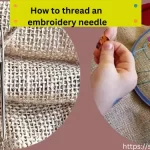
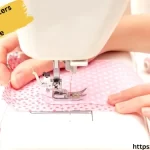
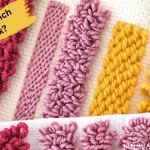
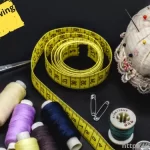
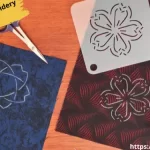
Leave a Reply